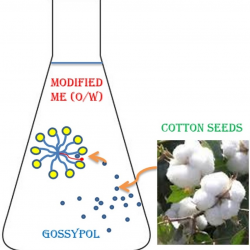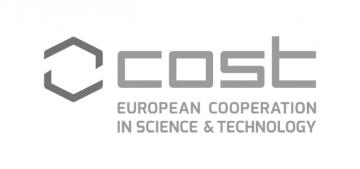
Prigat Y, Fattori A, Shames AI, Ottaviani MF, Garti, N. Colloids Surf. B Biointerfaces 2019;180:487-494.
Microemulsions (MEs) have gained increasing interest as carriers of hydrophobic bioactives in the last decades. However, it is still difficult to control the uptake and the release of bioactives directly extracted from plants. In this study, modified ME nanodroplets (nano-sized self-assembled liquids, NSSLs) were employed as extraction medium of gossypol, a toxic component of cottonseed. Loading was performed using both pure gossypol, and gossypol obtained by extraction from cottonseed. We achieved two goals: i) remove gossypol from cottonseed to obtain cotton-oil free of gossypol; and ii) extract gossypol directly into a nano-delivery vehicle for biomedical purposes. Structural and dynamical information on the unloaded and gossypol-loaded NSSL systems were obtained by self-diffusion nuclear magnetic resonance, SD-NMR, and spin-probe electron paramagnetic resonance (EPR) studies. The results showed that NSSL formed fluid water-in-oil (W/O) nano domains at the lowest water contents; a more viscous bicontinuous structure at comparable oil and water contents, and, finally, oil-in-water (O/W, micellar-like) at the higher concentration of water. These micellar-like structures were more fluid at the external hydrated surface, as demonstrated by SD-NMR, while the lipidic region tested by EPR revealed an increasing packing. In all these structures, gossypol mainly localized in the lipophilic region close to the water interface. Overall, SD-NMR and EPR provided complementary information, helping to clarify the structural properties of NSSLs formed at different water contents and their ability to incorporate gossypol also directly from cottonseed-NSSL mixtures. Copyright (C) 2019 Elsevier B.V.


